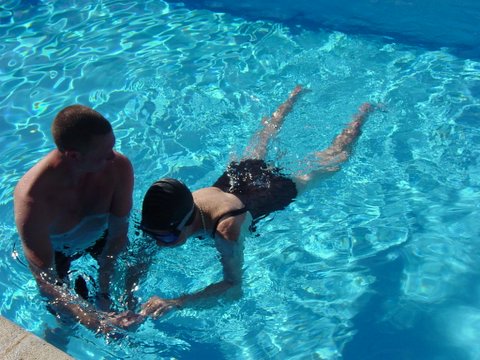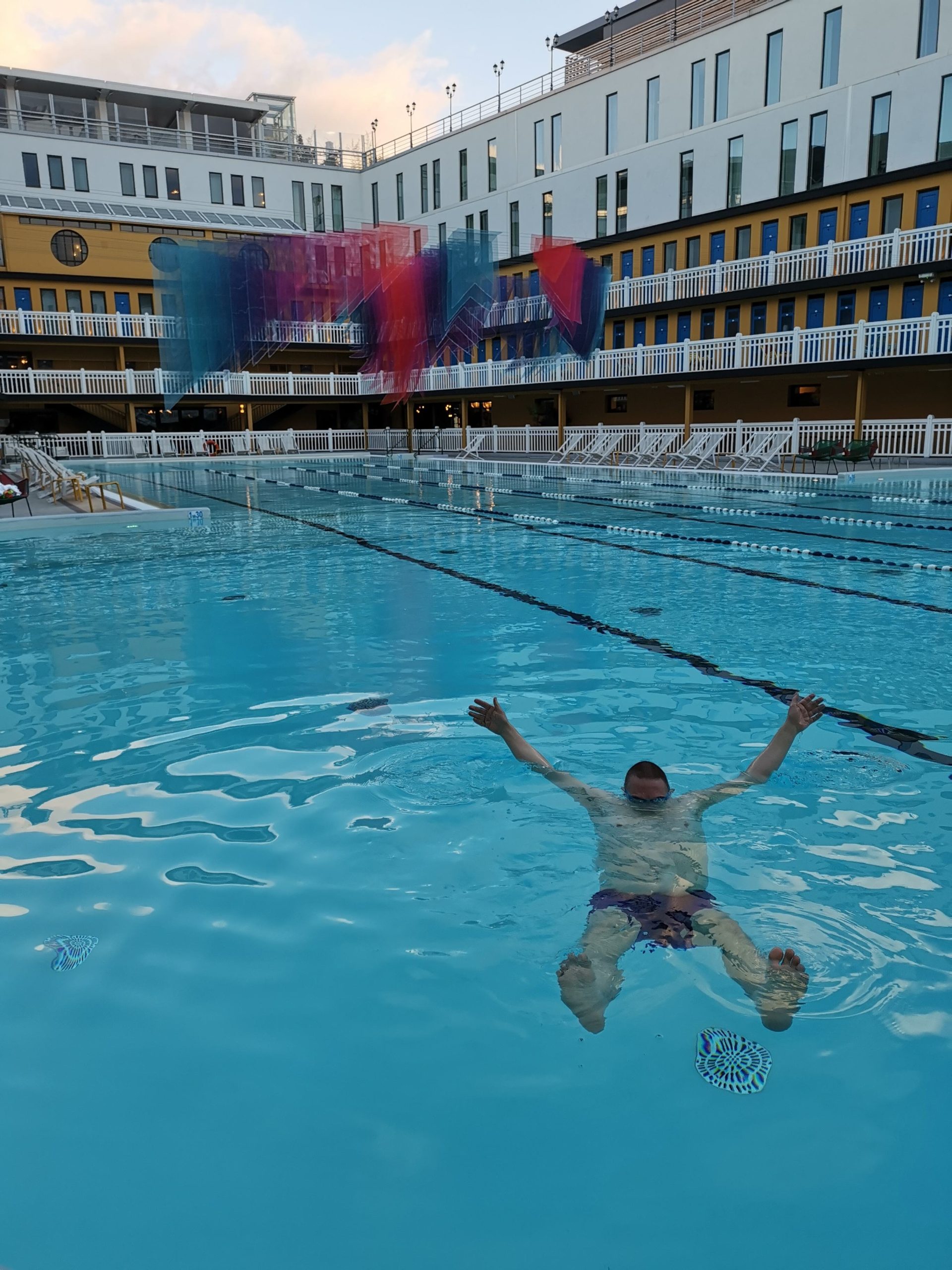Being in water is a real opportunity to reduce unnecessary tension, to release and expand, to let things happen.
The Alexander Technique is invaluable for anyone lacking confidence in water.
We help you become more at home in water by focusing on keeping the integrity of your head, neck and back. Being in water uniquely lends itself to finding this integrity but more often than not, we miss the opportunity.
Do you feel you need to hold yourself in the water to be safe or can you enjoy letting the water take the weight of your head and upper body? Do you have to force air out underwater or can you let it happen? These are the most significant questions, we think, for anyone who wants to improve their relationship with water/ swimming.
Everyone can learn to enjoy letting go in water, even if a bit of human contact is needed. This is what we want to help you do.

Learn Not to Swim
Being in water is a great opportunity to reduce unnecessary tension, release and expand, let things happen. But working on swimming technique – the competitive strokes – does tend to move us away from the realm of non-doing; from just making discoveries about ourselves in water.
Whether you’re a non-swimmer or a swimmer, we encourage you to explore the benefits of floating around and working with very simple movements.
The problem with most swimming lessons is the emphasis on teaching competitive strokes to kids and adults whose progress will be hindered by trying to learn them. Learning to swim becomes synonymous with learning the strokes. This is the system Ian and Cheryl refuse to feed because we know from experience it doesn’t work.
Think how you might want to be when visiting a thermal spa instead of swimming up and down in a leisure centre. Also consider what children do when left to their own devices. They spend hours underwater, developing a feel for it through play. It’s never about swimming lengths, until they join a club.

Calm, warm water is an ideal medium to support non-doing work. Yes, competitive strokes may be swum with aesthetically pleasing grace. But, out of a belief in the benefits of swimming for exercise which we hear so much about, too many of us swim, and count, lengths with too little awareness of what we’re actually doing. Many recreational and fitness swimmers persistently pull their heads back, gasp for breath and strain their backs.
For success in applying the Alexander Technique in water, less is more. Because we’re land mammals after all, it may be sensible to question the celebrated benefits of swimming lengths as a main form of exercise. The benefits of floating around and allowing the water to support us, on the other hand, are generally not well enough appreciated.

